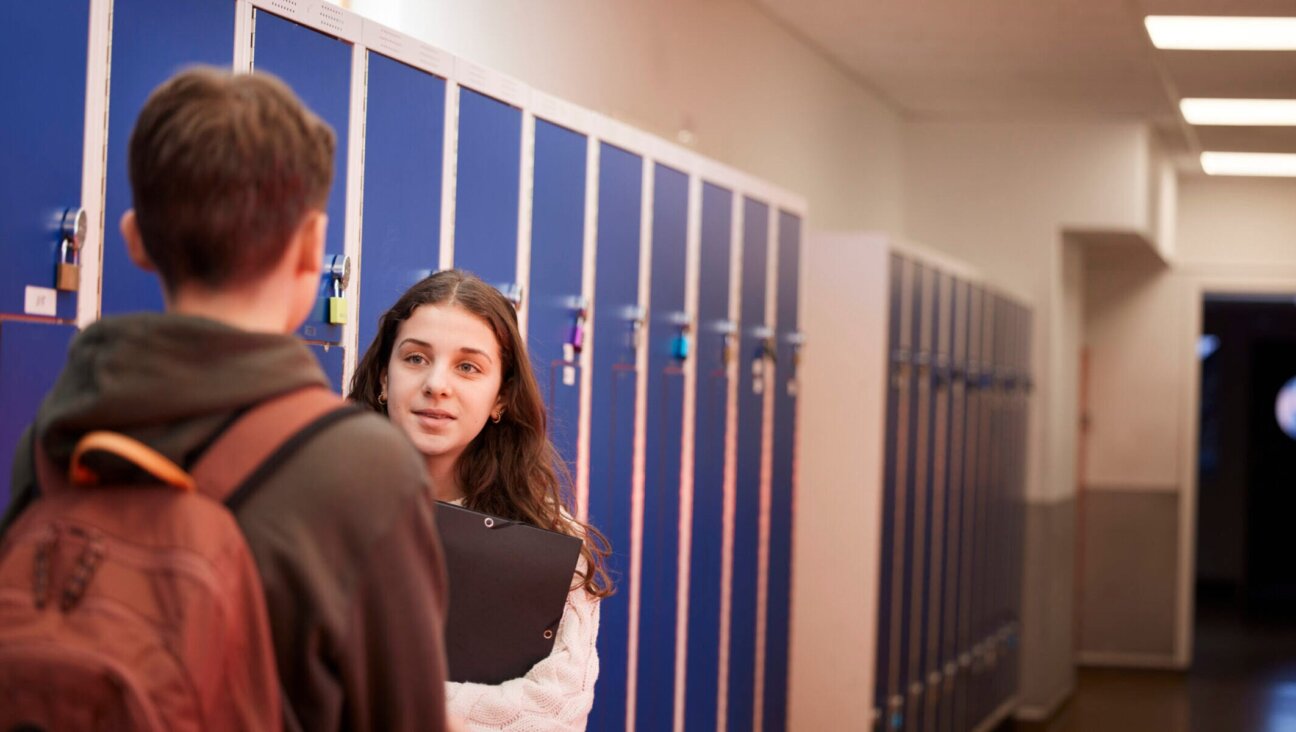A Class of Their Own

Eager Minds: Maxwell?s students hold up their homework assignments. Image by COURTESY OF NANCY KALIKOW MAXWELL
In bold letters, I write the word nakhes on the board.
“How’s it pronounced again?” asks one of the five male students in the class.
I say the word again, emphasizing the guttural sound in the middle of it.
“Now you try it.”
Amid much laughter and throat clearing, 22 African-American adults try coughing out the proper pronunciation of nakhes.
Once the merriment dies down, I explain the term, emphasizing the central role that pride plays in the Jewish family. The students listen carefully, many jotting down notes as I speak, adding this definition to the words chutzpah (The Yiddish word for nerve, which has become widely accepted in English)*, shmateh* (rag) and pushke (can), which we had discussed previously.
When I agreed to teach REL2600, Jewish History and Culture, a three-credit community college course offered at Miami Dade College, where I work, I had no idea that interest in the topic would be so intense. To the contrary, I originally approached the teaching assignment with two fears: one about the students, and one about myself.
Because most of the students belong to Peaceful Zion Missionary Baptist Church in a predominantly African-American section of Miami, I feared they would be bored with the topic — or worse, confrontational. I imagined tirades intended to bring the teacher to accept Jesus as her personal savior.
Though I am Jewish, I have a master’s degree in Catholic theology. In pursuit of that degree, I found that the Catholic faculty and students were consistently respectful of my religious traditions. But I had never been in an academic setting with African-American Baptists. I feared they would feel a religious duty to save me.
My other apprehension was that I lacked the academic training to instruct these students. When the program director offered me the teaching assignment, I confessed that a rabbi would be a better choice. But she assured me that a Jew with a graduate degree in religion was exactly the type of teacher needed.
Within the first few minutes of the first class, I knew she was right.
“What’s up with those long sideburns the men have?” the first student asks in response to my question of what they wanted to learn in this class.
“Which is the holiday where you eat those crackers?”
I relaxed, realizing that their interest in the topic was more practical than theoretical. Ironically, the class did briefly become confrontational, but over where to buy the best knishes.
After reviewing the major subjects to be covered in the course — Jewish food, humor, names, theology, history, lifecycle events, holidays — I ask, “Are there any other topics you would like included?”
From the back of the room, a student blurts out, “Sister, give us everything you’ve got!” to which a chorus of “amens” rang out.
This statement turns out to be prophetic. From minyans to mezuzas, they want to learn everything about Jews.
Other teachers at the college would envy my students’ motivation to learn. When I require them to attend a synagogue service, many visit two, throwing in a bar mitzvah for good measure. “Boos” ring out when technical difficulties prevent us from watching an entire documentary on Jewish history. “What is the name of that movie?” several ask, so that they can watch the rest at home.
Several weeks into the term, I feel comfortable enough with the students to ask; “Why are you all so interested in Jews? Would you be so interested if this class were in Buddhism or Islam?”
“Because you all had the Holocaust and we had slavery,” one explains.
“There were parts of Miami where blacks and Jews couldn’t go,” remembers a retiree, who, like many in the class, is getting a degree late in life.
The similarities between Jewish and black cultures become obvious when we discuss antisemitism, marginalization and how food, family and humor reflect cultures. The central role of history for Jews, and the impact of slavery on African Americans, provides for interesting discussion. When I mention that the percentage of Jews who voted for Obama was 78% while the national vote was 53%, spontaneous applause erupts in the class.
But I find that I am not just a teacher in this classroom — I’m a student, too. I learn that my class feels that Jews should stop complaining about the cost of synagogue membership. When I explain that synagogue membership costs more than $1,000 (deliberately underestimating the cost), several call out, “Is that all?” They are amazed because most of them “tithe” — donate one-tenth of their earnings to charity — which comes out to much more than $1,000.
I also learn that my students are incredibly dedicated to this class. Attendance has been nearly perfect, with many — including the wife of the church pastor (aka their “rebbetzin”) — missing only one class to attend a regional church conference. The eight-and-a half-months pregnant mother of two made it to every class until the week before her due date.
And I realize that one word encapsulates what I feel for these students: nakhes.
Nancy Kalikow Maxwell is a freelance writer and library director at Miami Dade College North Campus. She lives in Fort Lauderdale, Fla., and can be reached at [email protected].














